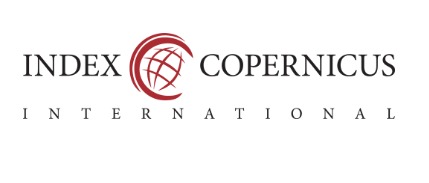Quantification of Educational Inequality through the Application of Gini Coefficient in Educational Indices
Abstract
Aim: This paper aims to show why it is important to keep an eye on educational disparities across countries and how to do so.
Methodology: The paper uses the Gini coefficient of education, a method suggested by Hojo (2009) and Thomas, Wang, and Fan (2001). The degree of inequality in educational attainment was measured using this technique, and its historical development in Japan, Korea, and the United States was followed. Then, the Gini index was contrasted with the mean years people spend in school to see how the two measures evolved over time.
Findings: The results showed that while educational inequality increased at varying rates across the three countries, the mean number of years people spent in school rose steadily. Second, it discovered that the Gini coefficient of Korea and the United States differed significantly, even though both countries have a sizable population that is highly educated.
Novelty/Implications: This is a rare paper because it not only makes a case for why it’s important to pay attention to educational inequality but also explains what it is and how it relates to a more standard measure of educational achievement. In addition, the Gini coefficient was evaluated through a series of comparisons with other results.
References
Barro, R. J., and Lee, J. W. 2013. “A New Data Set of Educational Attainment in the World, 1950-2010.” Journal of Development Economics 104: 184-198.
Bellu, L. C., and Liberati, P. 2006. “Inequality Analysis: The Gini Index.” Retrieved August 04, 2017 (https://goo.gl/qvZRa7).
Coombs, P. H., and Ahmed, M. 1974. Attacking Rural Poverty: How Nonformal Education Can Help. Washington, DC, WA: International Bank for Reconstruction and Development.
De Maio, F. G. 2007. “Income Inequality Measures.” Journal of Epidemiology & Community Health 61(10): 849-852.
Godo, Y. 2011. “Estimation of Average Years of Schooling for Japan, Korea and the United States.” Retrieved August 04, 2017 (https://goo.gl/VPQXhy).
Hojo, M. 2009. “Inequality in Japanese Education: Estimation Using the Gini Education Coefficient.” Japanese Economy 36(3): 3-27.
Holsinger, D. B. 2005. “Inequality in the Public Provision of Education: Why It Matters.” Comparative Education Review 49(3): 297-310.
Kurosaki, T., and Khan, H. 2006. “Human Capital, Productivity, and Stratification in Rural Pakistan.” Review of Development Economics 10(1): 116-134.
Kwok, K. C. 2010. Income Distribution of Hong Kong and the Gini Coefficient. Hong Kong, China: The Gov- ernment of Hong Kong.
Mellor, J. 1989. Dramatic Poverty Reduction in the Third World; Prospects and Needed Action. Retrieved April 16, 2014 (https://goo.gl/knqB6y).
Mesa, E. P. 2007. “Measuring Education Inequality in the Philippines.” Philippine Review of Economics 44(2): 33-70.
Ministry of Education, Culture, Sports and Technology Japan. 2005. Japanese Education at a Glance. Tokyo, Japan: The Ministry of Education, Culture, Sports and Technology Japan.
Thomas, V., Wang, Y., and Fan, X. 2001. Measuring Education Inequality: Gini Coefficients of Education (Vol. 2525). Washington, DC, WA: World Bank Publications.
United Nations Development Programme. 2010. The Real Wealth of Nations: Pathways to Human Development. New York, NY: The United Nations Development Programme.
Venkataraman, B. 2009. “Education for Sustainable Development.” Environment: Science and Policy for Sustainable Development 51(2): 8-10.
Wail, B., Hanchane, S., and Kamal, A. 2011. “A New Data Set of Educational Inequality in the World, 1950-2010: Gini Index of Education by Age Group.” Retrieved October, 2011 (https://goo.gl/JZMhDw)Yildiz, F. U., and Kayili, G. 2015. “Examining the Effects of Computer-Assisted Preschool Educational Activities on Children’s Intuitive Mathematical Ability.” Journal of Advances in Humanities and Social Sciences 1(1): 1-8.
Ziesemer, T. 2016. “Gini Coefficients of Education for 146 Countries, 1950-2010.” Bulletin of Applied Economics 3(2): 1-8.

This work is licensed under a Creative Commons Attribution-NonCommercial 4.0 International License.












.png)










